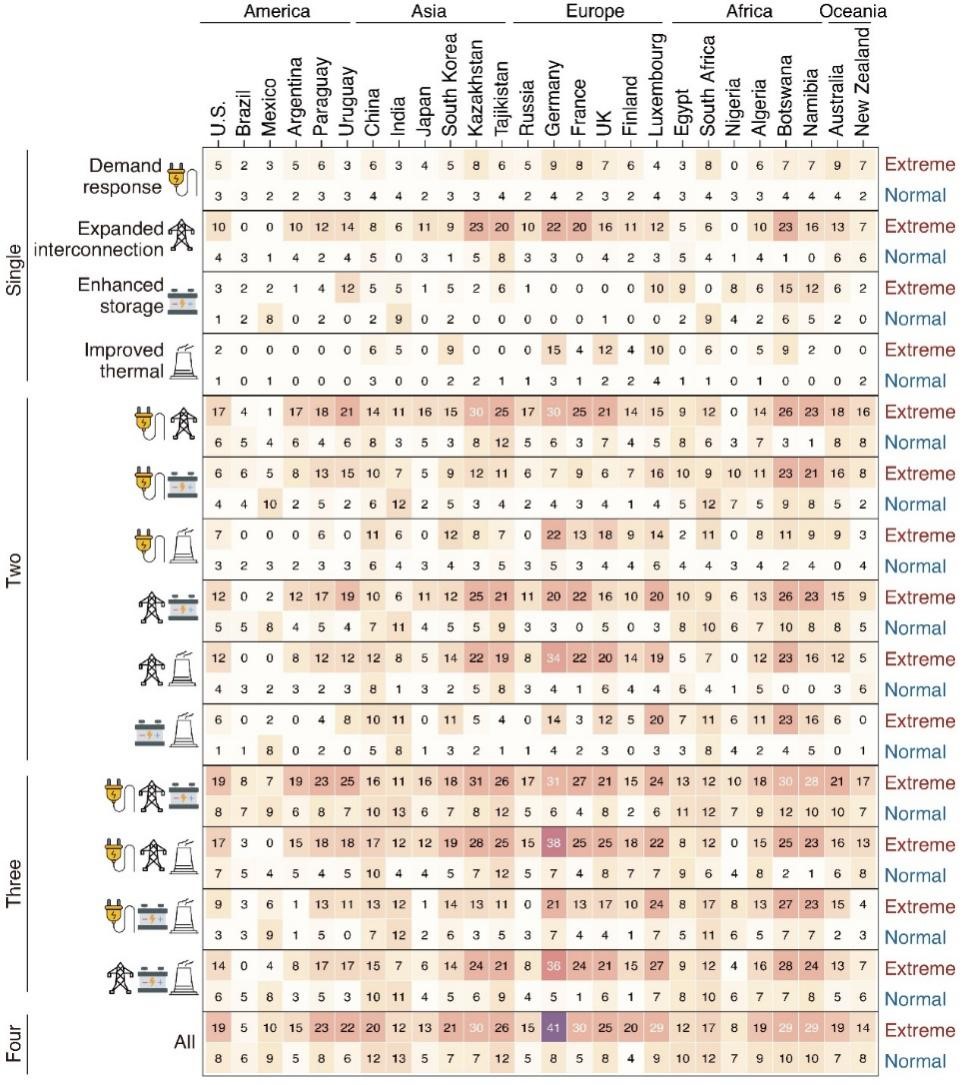Chinese Scholars and Overseas Collaborators Explores Climate-resilient Strategies for Future Global Wind and Solar Power Systems
Supported by the National Natural Science Foundation of China’s Scientific Program for Sustainable Development International Cooperation (SDIC Grant No.: W2412154), the research team led by Professor Qiang Zhang and Associate Professor Dan Tong from Tsinghua University investigated the impact of climate change on power system costs and proposed its mitigation strategies. Their research paper, titled "Strategies for Climate-Resilient Global Wind and Solar Power Systems", was published in Nature on July 31, 2025. Paper link: https://www.nature.com/articles/s41586-025-09266-7.
Developing a new high-share wind-solar power system is a core technological pathway for advancing the global clean energy transition. However, climate change is intensifying extreme weather events, which disrupt not only wind-solar power generation but also electricity demand, thereby exacerbating supply-demand imbalances and system cost burdens. It is therefore of great scientific significance to systematically clarify how extreme events drive up costs and to develop effective mitigation strategies for building a future-oriented power system with safe, controllable, flexible, and efficient operation.
Based upon climatological datasets across different scenarios from the Coupled Model Intercomparison Project Phase 6 (CMIP6), the researchers developed an analytical framework coupling climate change, extreme events, and energy security. They comparatively assessed the impact of climate change on wind and solar resource availabilities and electricity demand across 178 countries worldwide between 2016-2020 and 2056-2060. In addition, they quantified the change in hourly cost during extreme periods based upon an electricity dispatch optimization model. The results indicate that climate change will result in enhanced supply-demand imbalances and increased demands for energy storage capacity, thereby driving up hourly costs during extreme periods. Globally, 47 countries are projected to experience an increase of over 5% in hourly cost during extreme periods, with some countries even exceeding 20%.
Furthermore, the researchers evaluated the effectiveness of different combinations of four measures, i.e., demand response, expanded interconnection, enhanced storage, and improved thermal, in decreasing system costs. The results show that while a single measure can typically reduce system costs and multiple measures usually yield a substantially greater benefit, well-designed measure combinations are crucial for addressing climate risks in high-share wind-solar power systems.
This study systematically disentangles the mechanism by which climate change impacts global high-share wind-solar power systems and proposes tailored solutions to enhance their climate resilience. It offers theoretical references and scientific support for building a new power system with enhanced climate resilience as countries progress toward net-zero emissions.

Figure: Effectiveness of different strategies on reducing climate-driven increases in hourly costs under a specific scenario.
Contact Us

National Natural Science Foundation of China
Add: 83 Shuangqing Rd., Haidian District, Beijing, China
Postcode: 100085
Tel: 86-10-62327001
Fax: 86-10-62327004
E-mail: bic@nsfc.gov.cn
